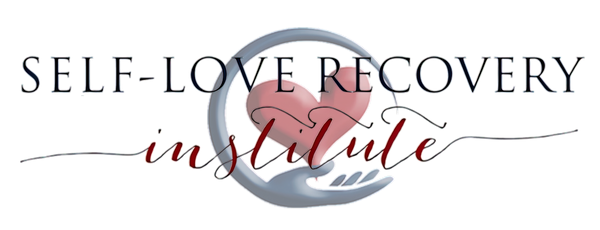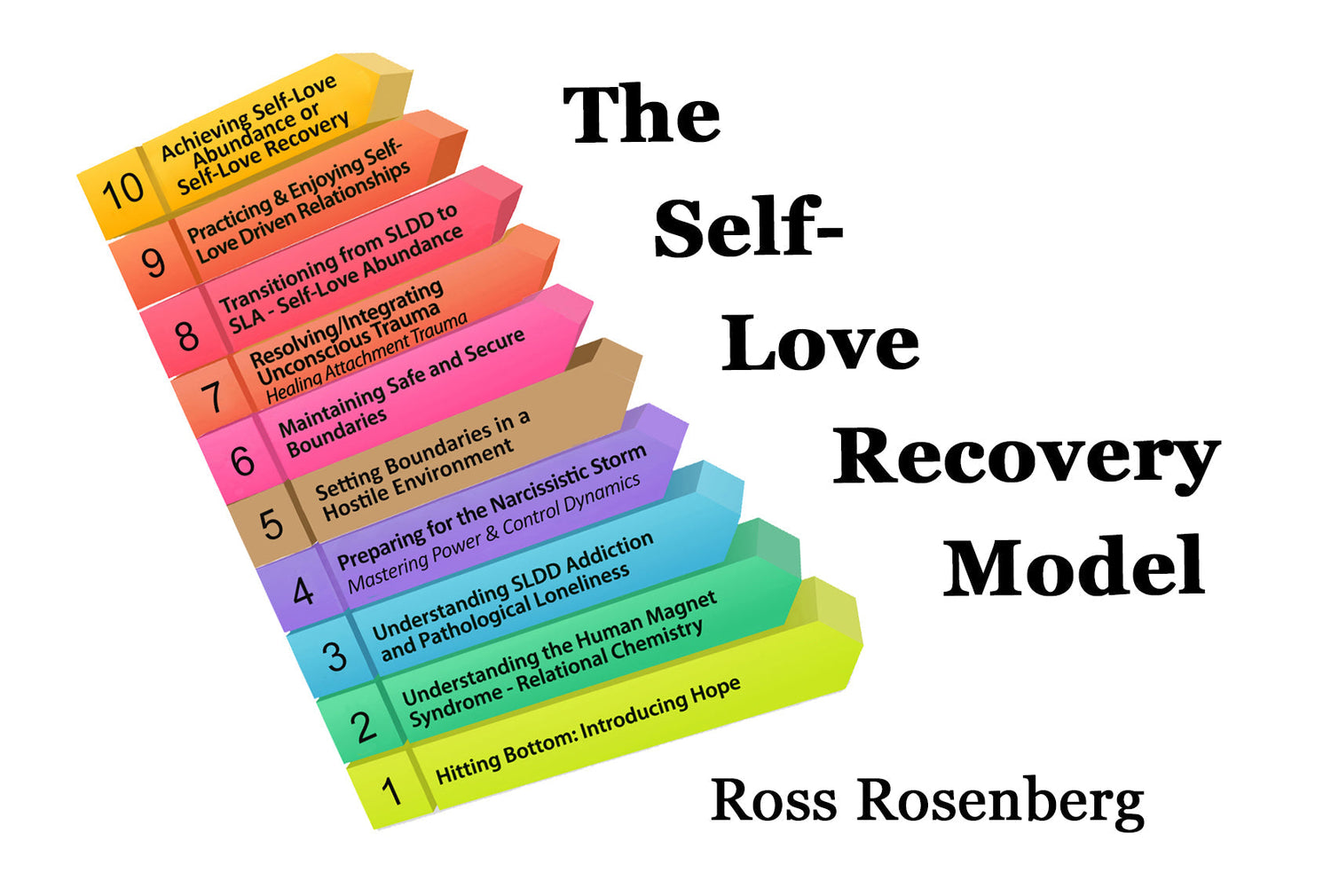Rosenberg’s Self-Love Recovery Model provides a structured roadmap for individuals seeking to heal from the wounds of toxic relationships. It focuses on rebuilding self-worth, developing emotional independence, and creating a life grounded in self-love. Key components of the model include:
1. Recognizing and Addressing Self-Worth Issues – Identifying and reframing negative beliefs that erode self-esteem.
2. Establishing Healthy Boundaries – Learning to set and maintain firm boundaries to protect emotional well-being and prevent manipulation.
3. Reclaiming Personal Identity – Rediscovering interests, values, and desires to restore a sense of individuality after toxic relationships.
4. Transforming Self-Love Deficit Disorder into Self-Love Abundance – Replacing self-neglect with a lasting foundation of self-love, fostering healthier relationships and a more fulfilling life.
Through these strategies, the Self-Love Recovery Model provides a structured pathway to healing. Its ultimate goal is to neutralize Self-Love Deficit Disorder while cultivating Self-Love Abundance—a lasting emotional, personal, and relational transformation.
Rosenberg emphasizes that recovery is not a one-time event but a lifelong journey. “Self-love abundance is the cure,” he explains, “but it’s not something you achieve and forget about. It’s a continuous process.” He encourages individuals to remain vigilant, as codependent patterns can linger even after breaking free from toxic relationships.
Differentiation: The Foundation of Healing
Rosenberg defines differentiation as the process of developing a strong, independent identity before entering relationships. Many individuals with SLDD or codependency fear being alone, as loneliness is often tied to deep-seated shame. This fear can lead to an unhealthy dependence on relationships for emotional stability, resulting in enmeshment rather than genuine connection.
True differentiation involves recognizing and embracing one’s identity as distinct from others, particularly in dysfunctional family systems. For those raised by narcissistic parents, this process can be especially challenging. Many have been conditioned to suppress their true selves to meet the needs of their caregivers, sacrificing their individuality in the process. By reclaiming autonomy, individuals can break free from these patterns and build relationships rooted in self-love rather than dependency.
The Power of Detachment in Recovery
Detachment is a key principle in Rosenberg’s Self-Love Recovery Model. He likens the struggle of codependents to being trapped in a wrestling ring with a narcissist—where every engagement reinforces the power imbalance, leaving them drained and powerless. Instead of fighting an unwinnable battle, he advocates for strategic disengagement as the key to regaining control.
By stepping away from emotional conflicts, individuals create space to focus on their own healing. This shift empowers them to make intentional choices about their future—whether that means setting firm boundaries, ending toxic relationships, or embarking on a journey toward personal freedom and self-love.
Observing Without Absorbing
I learned long ago,
never to wrestle with a pig.
You get dirty, and besides,
the pig likes it.
-George Bernard Shaw
Rosenberg highlights the importance of learning to “observe and not absorb,” a crucial skill for managing relationships with narcissistic individuals. This strategy helps individuals detach from the emotional chaos inflicted by manipulators, allowing them to recognize toxic behaviors without becoming entangled in them. Instead of engaging in conflict or seeking validation, they learn to step back, retain their personal power, and avoid further enmeshment.
He explains that engaging in arguments with a narcissist is like stepping into a wrestling ring with an opponent who thrives on control and conflict. The narcissist will always have the upper hand because their power lies in emotional manipulation. True empowerment comes from disengagement—choosing not to step into the ring at all.
Rosenberg warns against what he terms False Power Syndrome—the belief that fighting back against a narcissist will lead to empowerment. In reality, this often results in deeper entanglement. The key to regaining power lies not in confrontation, but in recognizing that disengagement is the path to true freedom.
By practicing observing without absorbing, individuals learn to identify manipulation tactics without reacting emotionally. This enables them to maintain control over their responses and avoid getting swept into unnecessary battles.
Overcoming Gaslighting
A critical aspect of healing involves addressing the internalized gaslighting that many individuals experience as a result of their upbringing. Those raised in narcissistic environments often absorb damaging messages about their worth, leading to self-doubt and feelings of inadequacy. This self-gaslighting can be deeply ingrained, making it difficult to break free from destructive thought patterns.
Rosenberg emphasizes the importance of recognizing the origins of these negative beliefs, often tracing them back to early childhood experiences. By understanding how these narratives were imposed upon them, individuals can begin to separate their true selves from the conditioning they received, allowing for genuine healing and self-acceptance.
Conclusion: The Journey Toward Self-Love
At its core, Rosenberg’s work is about guiding individuals toward Self-Love Abundance. This is not a destination but an ongoing process of self-discovery, boundary-setting, and emotional growth. Healing from SLDD requires a commitment to challenging old beliefs, cultivating self-worth, and embracing a new way of relating to oneself and others.
By redefining codependency as Self-Love Deficit Disorder and introducing the Self-Love Recovery Model, Ross Rosenberg has provided a transformative framework for healing. His work empowers individuals to break free from toxic cycles, reclaim their self-worth, and cultivate a life rooted in self-love.
Through differentiation, detachment, and self-awareness, those struggling with SLDD can move beyond the pain of the past and embrace a future of emotional freedom and abundance.
While the journey may be met with resistance—both internally and from those unwilling to accept personal growth, the pursuit of self-love is essential. Family systems, especially those built around narcissistic dynamics, may react negatively to change. However, breaking free from these patterns is crucial for achieving long-term emotional health and fulfilling relationships.
The path to self-love is not just about recovery, it’s about rediscovering the person you were always meant to be.


0 comments